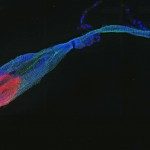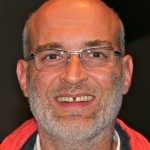Link to Pubmed [PMID] – 12350369
Int. J. Parasitol. 2002 Oct;32(11):1323-44
Multigene families optimise fitness by providing a set of related genes with possibly different temporal and/or topological expression patterns. We analyse here the structural organisation and sequence diversity of the rDNA, sera and var C Plasmodium falciparum families, and discuss their consequences for parasite biology. The low rDNA copy number, which reduces reshuffling, is probably the corollary of the need for functionally distinct rRNAs in the insect and in the vertebrate host. The unusual intra-genome and population rDNA sequence diversity results in cells equipped with mosaic ribosome sets. The functional constraints are such that ribosome compatibility could influence parasite fitness and contribute to population structuring. Unlike the dispersed rDNA units, the sera family is arranged as a tandem gene cluster, with seven contiguous similar genes, and one more distantly related paralog. We address the question of the inclusion criteria in family definition. We discuss the results concerning the SERA proteins expression and function in the context of the long overlooked multigene family. The var C module is shared by var genes, ‘orphan’ var C and var C pseudogenes. Analysis of 125 var C deduced protein sequences highlights a well-conserved framework, including putative phosphorylation sites, consistent with the proposed function of mediating interaction with cytoskeletal proteins. The 5′ and 3′ flanking sequences of the var C pseudogenes are heterogeneous. In contrast, the flanking sequences of the uninterrupted var C modules show remarkable conservation. This is interesting in view of the silencing activity of the var intronic sequence on var expression. The 5′ flanking sequence dichotomy reported for internal and sub-telomeric var genes extends to the 3′ flanking sequences. This has profound implications for transcription regulation and generation of diversity. The var C family suggests a role for pseudogenes as a diversity reservoir and in genome dynamics by promoting ectopic recombination.




